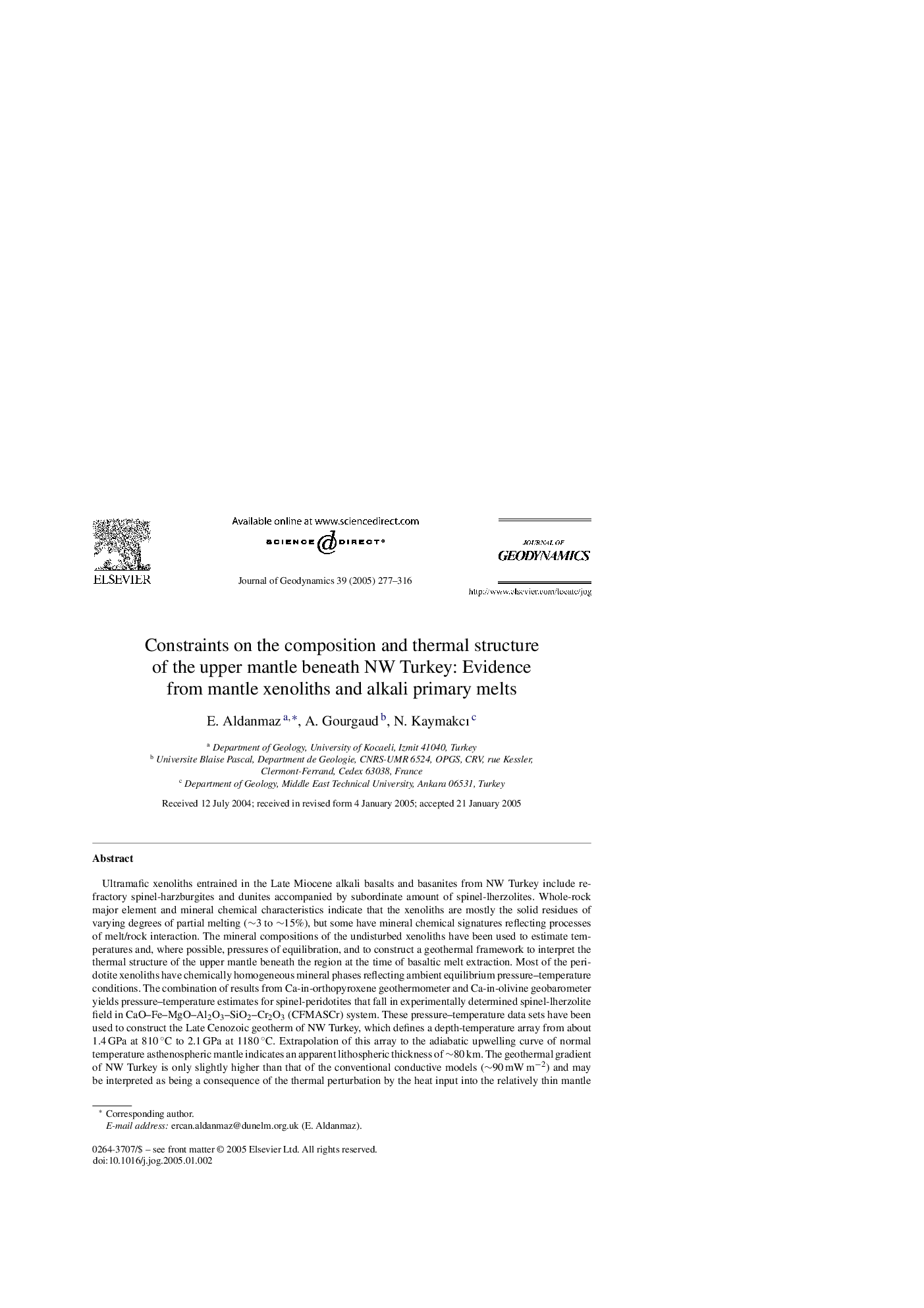| کد مقاله | کد نشریه | سال انتشار | مقاله انگلیسی | نسخه تمام متن |
|---|---|---|---|---|
| 9525906 | 1349902 | 2005 | 40 صفحه PDF | دانلود رایگان |
عنوان انگلیسی مقاله ISI
Constraints on the composition and thermal structure of the upper mantle beneath NW Turkey: Evidence from mantle xenoliths and alkali primary melts
دانلود مقاله + سفارش ترجمه
دانلود مقاله ISI انگلیسی
رایگان برای ایرانیان
موضوعات مرتبط
مهندسی و علوم پایه
علوم زمین و سیارات
فرآیندهای سطح زمین
پیش نمایش صفحه اول مقاله

چکیده انگلیسی
Ultramafic xenoliths entrained in the Late Miocene alkali basalts and basanites from NW Turkey include refractory spinel-harzburgites and dunites accompanied by subordinate amount of spinel-lherzolites. Whole-rock major element and mineral chemical characteristics indicate that the xenoliths are mostly the solid residues of varying degrees of partial melting (â¼3 to â¼15%), but some have mineral chemical signatures reflecting processes of melt/rock interaction. The mineral compositions of the undisturbed xenoliths have been used to estimate temperatures and, where possible, pressures of equilibration, and to construct a geothermal framework to interpret the thermal structure of the upper mantle beneath the region at the time of basaltic melt extraction. Most of the peridotite xenoliths have chemically homogeneous mineral phases reflecting ambient equilibrium pressure-temperature conditions. The combination of results from Ca-in-orthopyroxene geothermometer and Ca-in-olivine geobarometer yields pressure-temperature estimates for spinel-peridotites that fall in experimentally determined spinel-lherzolite field in CaO-Fe-MgO-Al2O3-SiO2-Cr2O3 (CFMASCr) system. These pressure-temperature data sets have been used to construct the Late Cenozoic geotherm of NW Turkey, which defines a depth-temperature array from about 1.4 GPa at 810 °C to 2.1 GPa at 1180 °C. Extrapolation of this array to the adiabatic upwelling curve of normal temperature asthenospheric mantle indicates an apparent lithospheric thickness of â¼80 km. The geothermal gradient of NW Turkey is only slightly higher than that of the conventional conductive models (â¼90 mW mâ2) and may be interpreted as being a consequence of the thermal perturbation by the heat input into the relatively thin mantle lithosphere via the passage and emplacement of magma(s). In contrast, the calculations, based on the melt products of experimental phase equilibria, show that the compositions of the host magmas precipitating the most magnesian olivine (with 88.5 to 91.4% forsterite; Mg2SiO4) phenocrysts of alkaline melts reveal significantly higher anhydrous liquidus temperatures that range from about 1290 to 1410 °C. The results are inconsistent with melt generation by either deep-seated thermal anomalies associated with mantle plumes (Tp > 1450 °C) or melting of thermally perturbed (wet) mantle lithosphere, but are consistent with the adiabatic upwelling of normal temperature (Tp â¼Â 1300 °C) mantle asthenosphere probably along the lithospheric scale major shear zones.
ناشر
Database: Elsevier - ScienceDirect (ساینس دایرکت)
Journal: Journal of Geodynamics - Volume 39, Issue 3, April 2005, Pages 277-316
Journal: Journal of Geodynamics - Volume 39, Issue 3, April 2005, Pages 277-316
نویسندگان
E. Aldanmaz, A. Gourgaud, N. Kaymakcı,